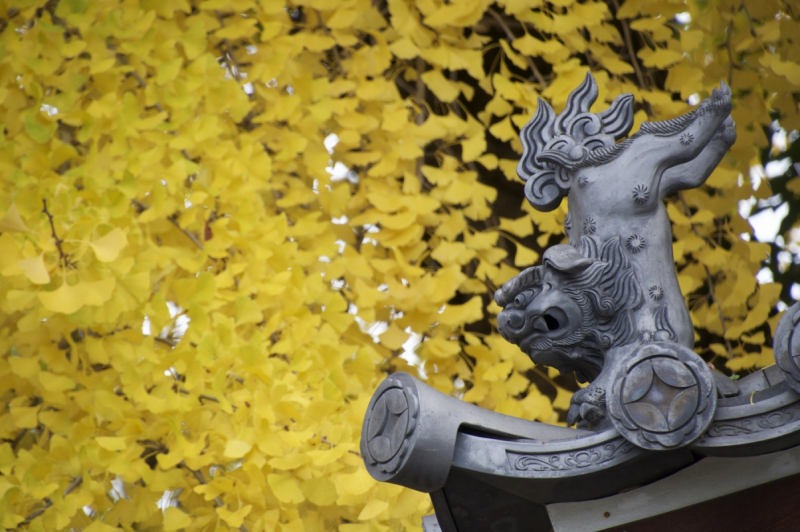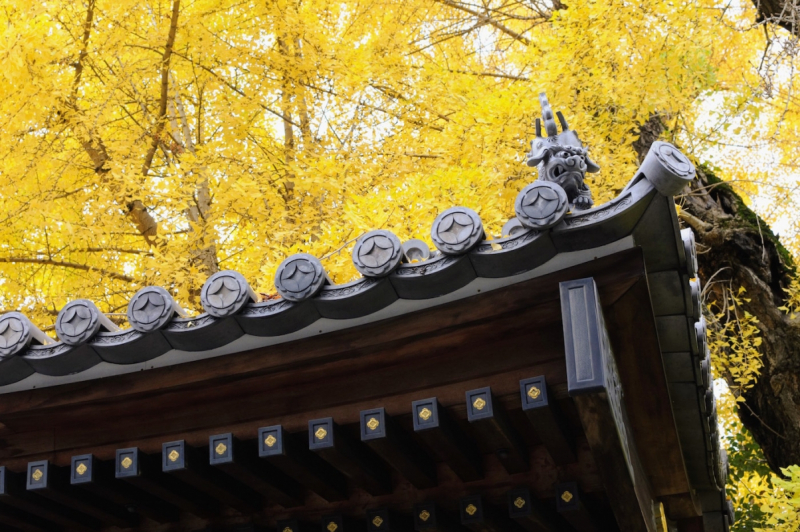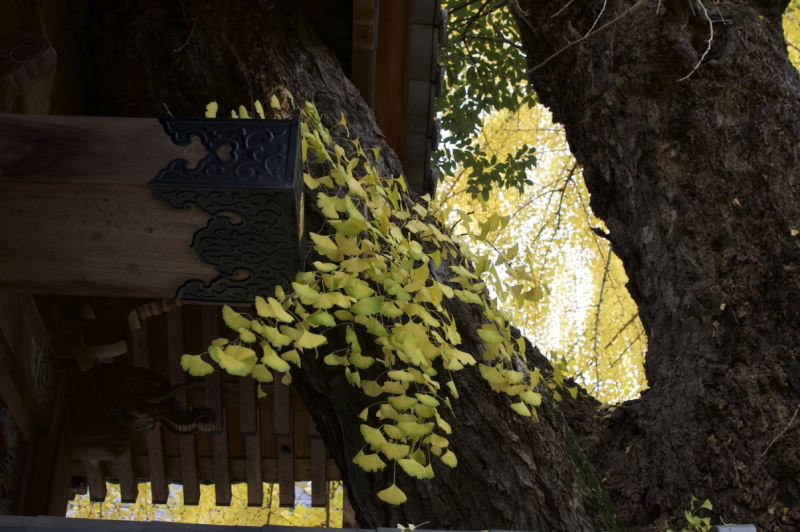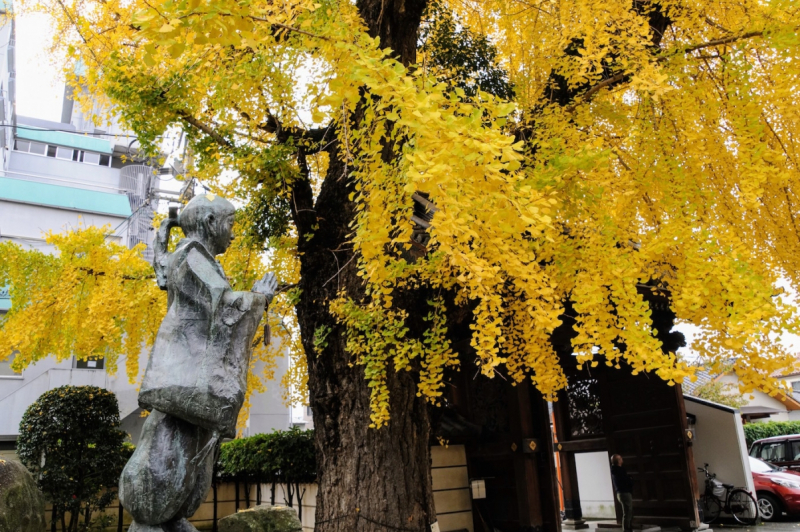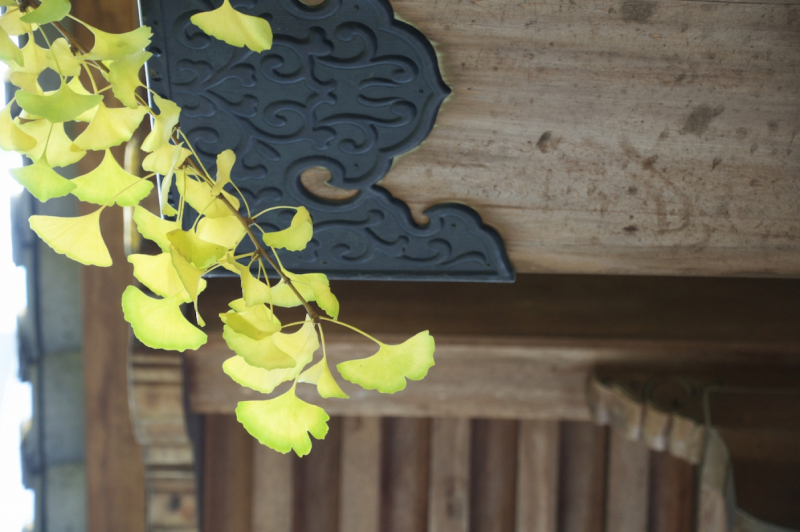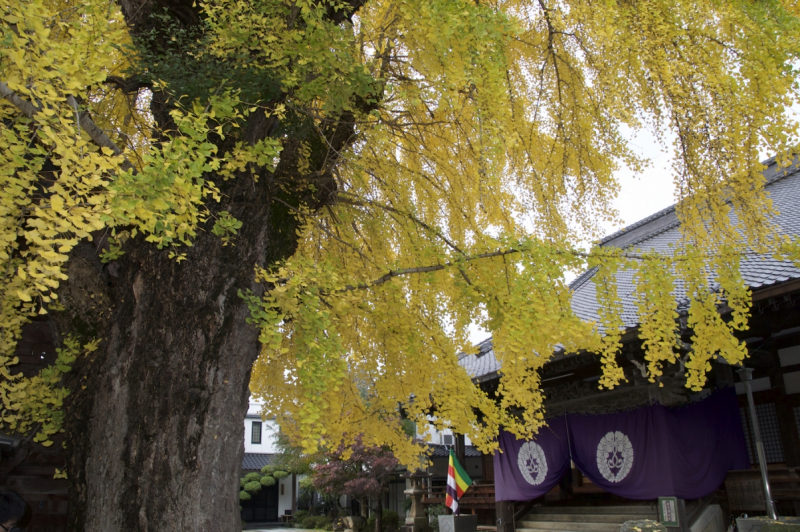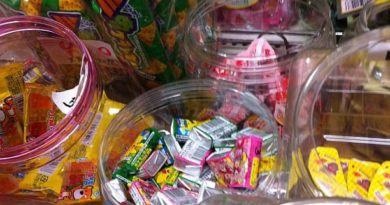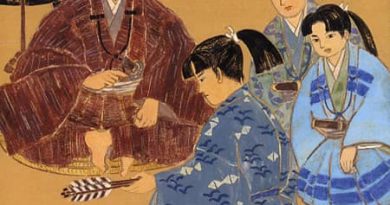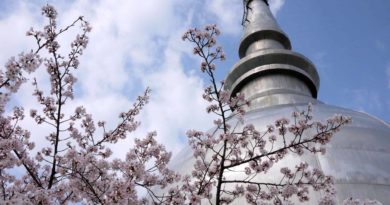Anraku-ji Temple A-bombed Gingko
The ginkgo tree that grows through the roof of the temple gate of at Anraku-ji in Ushita is around 300 years old, perhaps even older when you consider that it was grow from a cutting from a 12th century tree brought to Hiroshima from Zenpuku-ji Temple in Tokyo.
This gnarled 20m tall gingko is one of the furthest of the 170 or so designated A-bomb survivor tress a Hiroshima, standing at 2160m hypocenter. It’s code number is N21a53-01. The tree, which still bears the scars of the blast, was severely damaged, but new shoots began to sprout from the burnt trunk the year after the bombing. The temple’s main building, originally built in 1788, was much damaged the blast wind. It was restored in 1994, but still leans slightly to the north as a result of the damage.
In 2017, NHK interviewed Koji Toyooka, a former head priest of Anraku-ji. He reminisced about how he would play in the fallen leaves with his younger brother, Junji, as a child. 12 year old Junji was on a mobilized work crew on August 6, 1945 and severley burned by the A-bomb blast at the age of 12. He died soon after he was carried back to the temple. “I looked at the wounded person they said was my brother, but I didn’t recognize him. His face was blackened from the burns, and his lips had peeled off,” Toyooka recalls. “He stared at all 4 of us and said, ‘Thank you, father,’ ‘Thank you, mother,’ ‘Thank you, sister,’ ‘Thank you, brother.” And then he died. Toyoka took it upon himself to care for the tree, and it was he who proposed cutting a hole in the roof of the restored temple gate to accommodate the natural growth of the tree rather than cutting back the branches.
The leaves of the gingko tree turn a beautiful golden yellow in mid-November and litter the temple precinct after the fall.
Read an extended record of Koji Toyooka’s A-bomb experience here



